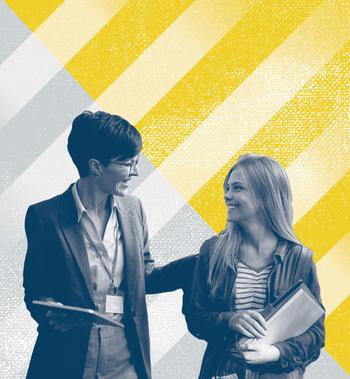FAFSA is a mess — but don’t delay your yield
2/15/2024
So many things have been going on with the FAFSA.
The FAFSA Simplification Act was passed on December 27, 2020, requiring the Department of Education to simplify the form and make changes to family contributions, Pell Grants, and special or unusual circumstances. After a few delays, the new FAFSA was intended to go live for applicants to the 2024-25 academic year.
Usually, the FAFSA opens on October 1 each year. However, the major overhaul delayed the launch by three months. On December 30, 2023 the form finally launched, but only for extremely limited windows of time. Families faced glitches, waiting rooms, “maintenance pauses,” and mid-application shutouts.
At the end of January 2024 came another major delay, when the Department of Education announced that colleges would not begin receiving applicants’ federal aid information until March at the earliest. Now, colleges are being asked to extend their typical May 1 commitment deadline. So far, only a few have announced extensions.
In early February, the department announced that it would allocate $50 million for the FAFSA College Support Strategy, to help colleges more quickly and accurately process financial aid packages.
And most recently, the National College Attainment Network found that FAFSA submissions from high school seniors dropped almost 57% from last year.
So, where are we today? Is it time to hit the panic button?
What’s happening with the FAFSA is chaotic. A blunder like this sure isn’t helping the perception of higher education’s value, either. There is so much to fix. Major inequities need to be addressed and remedied. This situation is creating a ton of extra work for financial aid and admissions professionals everywhere. Let me validate what you’re thinking: This is a big deal, yes, everything is a mess, yes, this is going to delay everything, yes… and no.
There’s something the FAFSA should not delay: your yield efforts.
You’re probably thinking: We can’t yield if we don’t issue financial aid packages. This might feel especially true if you tie your admission offer to a financial aid offer, so you can’t yield students who don’t even know if they’re in yet. I get that. You definitely don’t want to lead anyone on.
But the problem with this idea is that it defines yield too narrowly. We often think of yield as talking about ourselves, touting our strengths, and convincing students to choose us. It makes sense — you want students to choose you. But what if we looked at yield a bit more broadly? More empathetically?
Let’s take a step back and look at the funnel to understand what yield is trying to do.
We think of the funnel as a series of stages a student goes through, ending in enrollment. Regardless of whether all students go through it the same way or at the same time, the stages still apply because they align closely with how humans make decisions (one step at a time).
The traditional enrollment funnel looks something like this:
- Exploration: How does college work?
- At this stage, prospective students are deciding whether college is for them.
- Awareness: What do I know about (school)?
- Here prospective students are thinking about college, recalling the college names they’ve heard and what they know about them.
- Consideration: Could (school) be the place for me?
- Prospects at this stage are creating a short list of colleges to apply to.
- Application: Will I get in?
- During this stage, prospective students are applying, or they’ve applied and are waiting for a decision.
- Evaluation: Can I see myself belonging there and thriving after?
- At this point, prospects have been accepted and are making a decision about which place to commit to.
- Committed: How do I make this a reality?
- Prospective students at this stage have committed, but they still need to take a few steps to actually become students.
Typically, what we call yield is that evaluation stage. Prospective students have an offer, and you want them to accept it. So, you share a ton of content about what makes your college unique and special — things like:
- cool student stories
- our professors’ accolades
- student-teacher ratios and class sizes
- how talented our athletics teams are
- listings of clubs and organizations
- stories of alumni doing great things
- stats about what happens after graduation
But what if, instead of just sending them content about you, you asked: What do students need at this stage? What are they feeling? What are they doubting?
Then the list of content that you curate and send might look like this:
- how to manage time effectively
- learning to prioritize
- activities to do with your loved ones
- college financial aid explained
- making friends in college
- study guide for high school finals, curated by professors
You can come up with a totally different list, simply by putting yourself in their shoes. What’s going on in their lives as they’re trying to make this decision? They’re not just trying to choose a college — they’re also trying to graduate, they’re leaving family behind, they’re competing in sports, they’re working to make money, they’re caregiving.
And right now with the FAFSA, they too are panicking. So what might your content look like if you remember that they’re scared as well? What content might you send to appease a family who’s worried about the cost of college? What resources might you provide while they wait? How can you help?
That’s yield.
You don’t need to pause yield communications. But you shouldn’t just send them stuff about your school either. In this recruitment cycle especially, your prospective families need you. Let’s yield by creating value and supporting them through this. And in the end — whether you get their deposit or not — you win.




